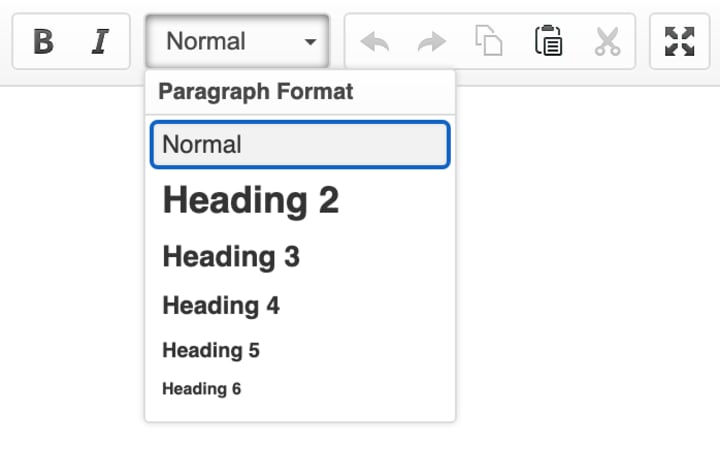How to Write the PERFECT Article Every Time!
The ins and outs of blogging, writing and copywriting. Write the PERFECT piece every time you put your writing hat on!

We all have our own methods when it comes to writing, but I’ve been doing it for over 10 years and developed what I think is a great formula.
It basically allows everyone to write their best article on something every single time.
Now, you don’t need to be a genius writer to implement this, and I guarantee if you do it right you’ll write a better piece than what is currently around.
How?
Well, this was my hook, if you want to find out what this method is all about, you need to read this guide!

First Things First: Targetting the Right Keywords
The first thing you need to do when you’re sitting down to write is decide upon your primary, or main, keyword.
If you’re a blogger on Medium, Vocal, and those other platforms, you’re probably going to need to think about keywords every single time.
However, if you own your own blog, chances are you have a list of keywords to use already.
But let’s go over keywords with help from the pros.
You can use Ahrefs or SEMRush to do some keyword research.
When you do that, you get to take a look at variables such as search volume and competition.
You want to pick something with a medium or preferable low level of competition, and a reasonable amount of search volume.
Now, here’s the subjective part…
…reasonable amount of search volume depends on how much traffic you’re used to attracting.
Don’t be afraid to start small.
A fraction of 10 is better than nothing of 100.
Note down your main keyword — I like to choose a keyword I see my competitors are using to see if I can “rug” them out of the top results as it helps with the other pieces as well.

Benchmarking: Use Everything They Did…And Then Pile Up Extra Stuff!
Ifyou’re looking to get rid of those first 3 results and RIP them with the sheer power of your perfect article… then you need to do better than them.
You want to implement what we at SEO call the “Skyscraper Technique” — Check Brian Dean on Backlinko for more on this topic.
Basically, you want to go over your competition’s articles.
Mention everything the first 3 results touched upon, use all the arguments and expose all the variables.
By now your article should already be better than those 3, because you combined them and each of them is only… well, one of them.
But we aren’t going to stop here.

Research & Document: Adding Some Extra Variables Into the Mix
Chances are those 3 articles are missing one or two arguments — or more.
Search for new variables to include.
Research & Document some new sources, find technical info, or just browse news on that topic and see if anything happened since the latest of those 3 articles was published.
You want to really demolish the other sources as far as the article is concerned — only then will you be able to steal their position in the SERPS (Search Engine Results Pages).
Now that you have all of this, it’s time to begin actually writing — the right way.

Create All Headings and Sub-Headings: Know Your Writing
Before you start writing, organize your article.
Write every H1 and H2 first.
A good idea is to list every single point you’re going to make into one header, which divides content nicely and hopefully helps you avoid huge walls of text.
You started the article with structure and built solid foundations for your “word house”
Each header should be followed by a paragraph in which you hook people, summarizing what you’re going to talk about and making a promise that can only be fulfilled by reading the rest. (basically, use hooks).
Finally, if you know your writing you already know how many words per heading you usually have.
This is good to gauge the size of an article beforehand, or something that will help you hit a certain word count.

Writing the Article: Time to Put In The Bulk of the Work
Now that you did all of the above, it’s time to start filling in those headers with the actual content.
You have everything you need to lay out the perfect article.
But since you did all of the planning and structuring beforehand, writing is a breeze — you just fill in the headers and you’re done.
This is the easiest part because you have all the info on the headers, or fresh in your head from research.

Identify Interlinking Opportunities: Inner Links and SEO
The next step is to ensure your perfect article is empowering you as much as it can, and maximizing its impact on your writing portfolio.
To do this, you’re going to go ahead and look at your existing articles to find opportunities to link to them from this fresh article.
This increases not only the number of people who will fall into the rabbit hole of consuming more of your articles but also packs tremendous SEO benefits.
Also, Google pays serious attention to how convenient and easy to navigate your pages are, and internal linking helps with this.
Now, you built a highly relevant backlink that not only benefits you in the eyes of the machine but in the eyes of your readers alike — which is even better.
Don’t isolate content!
Content is like the Internet — it should be interconnected!
If you can pepper your content with LSI terms or KGR keywords, even better, but sometimes you need to follow your SILO structure.

Finding Media for the Content: Time To Get Relevant Eye Candy!
An article that is poor in images is a poor article.
You need images to:
Break down text;
Serve as eye candy;
Act as checkpoints for readers;
…and more!
Rich media really packs a punch and is able to breathe life into your article.
It increases reading time, engagement, and reduces bounce rate.
One image before each header and one divider after each body of text will probably do the trick.
However, once you finish your article give it a little scan and see where your “designer brain” finds that an image could be a cool addition.

Spelling & Readability: Grammarly is Your Friend, and so is Hemmingway!
You don’t want your content to be full of typos, so you really need to give it a huge scan before publishing.
This is even more true if you’re not a native speaker!
You can use lots of software to help you with this, like Grammarly, which is the App I use myself.
It will point out stuff you may want to get fixed before pressing that publish button.

Publish and Monitor: Your Job Isn’t Over When You Click Publish!
It’s finally time to hit that publish button and get the article up on your blog.
It will start producing results sure, but will it perform as you wish it did?
There’s only one way to find out, and that’s by monitoring your content.
Always monitor every piece you have in your portfolio and edit as you go.
Sometimes you find data that gets you to do minor tweaks with major impact on traffic and conversions.
It’s definitely worth it.
Just like you need to monitor your links, you need to monitor your images, keywords, and traffic sources.
These are some of the things I think about when writing my articles.
Now, I’m not a genius writer, but I’m doing great — I’d wager most of it is due to my writing process.
Steal from it and add some of these tips to your method — let me know if it works for you.
As always, if you want to thank me, just follow me here or on Twitter.
Cheers!
About the Creator
Rui Carreira
A full-time blogger on a writing spree!
Founder of https://instageeked.com






Comments
There are no comments for this story
Be the first to respond and start the conversation.